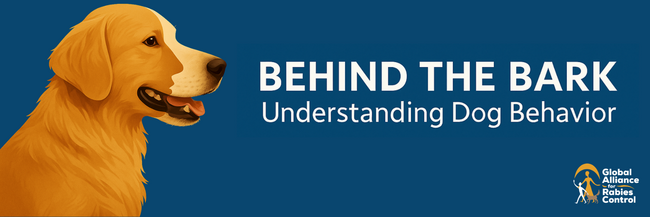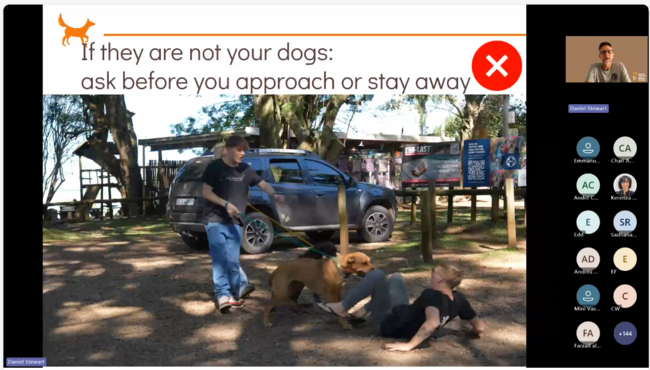Behind the Bark: Empowering Communities Through Understanding Dog Behavior

A key aspect to eliminating rabies is preventing dog bites. In Asia and Africa, humans are still getting bitten by dogs at an alarming rate. This is a stark reminder that we urgently need training and awareness on how humans can safely interact with dogs.
In July, I collaborated with GARC to host the Behind the Bark webinar series. The series focused on dog behavior, bite prevention, and how early life experiences shape a dog’s reactions to the world around them. The series was specifically designed for participants from Asia and Africa, where rabies continues to claim lives, often in heartbreaking, preventable circumstances. The response to the first webinar was incredible: over 200 participants joined us live. It was truly inspiring to see so much curiosity, engagement, and passion for understanding dog behavior.

In the first session, we explored the “how to” of reading a dog’s body language. This is an essential skill to avoid risky encounters. Whether you are identifying a stiff tail wag that signals tension, or recognizing the subtle difference between fear and submission, understanding a dog’s signals can make all the difference. We focused on providing real-world examples supported by video, audio, and imagery.
Some of the questions raised during the first Q&A session reflected the real-life challenges people face:
- What should I do if a dog chases me on a bicycle?
- How do I know if a dog is showing fear or submission?
- Is a wagging tail always a sign that the dog is happy?
These types of questions highlight the complexity of dog behavior, and the need for continued education. We had educators, animal control officers, health workers, and community leaders attending, all eager to make their interactions with dogs safer and more effective. The second session focused on how to prevent dog bites and how to keep yourself safe during an attack. It offered practical tips for recognizing a dog’s warning signs, as well as the essential steps to take during and after a bite event to reduce the risk of rabies exposure.
Our final session, the “puppy session”, explored how human actions, body language, and attitudes are linked to dog behavior. How we interact with puppies lays the foundation for the rest of their lives. Respect, kindness, and understanding help raise safer, more stable dogs. Education remains one of the most powerful tools in rabies prevention, and by helping people learn to “read” dogs in their communities, we will remove fear and create understanding. This is key to creating safer communities for both humans and dogs.

Did you miss any the sessions? GARC has some good news. We are working on bite-sized video clips from the webinars that will be available on GARC’s social media platforms. Follow GARC to stay connected and learn more about what’s Behind the Bark. In the meantime, sign up to complete GARC’s free online courses – click here.
It was an honor to be part of this series. I am grateful for the opportunity to share what I have learned and to contribute to this important work.
Article contributed by Daniel Stewart, Animal Behaviorist, Animal Welfare Educator, and Rabies Advocate